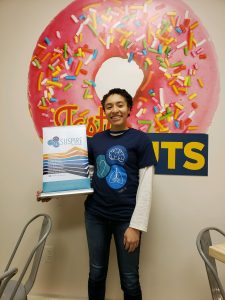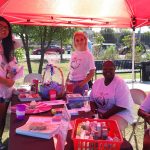With the information gathered from the assessment process in competency 7, the next step is to design and implement an intervention which is beneficial for the client in their environment. The structure used for the design is tailored specifically for the situation, but where does it come from? Why, research of course!
Research provides a point of reference for the social worker to follow as they create an intervention plan. Referencing empirical articles, professional networking, and critical-thinking is how the designing process begins; the first step must always be research! As the idiom states: ‘Don’t reinvent the wheel’. There’s no need to put time, energy, and resources into a new program where there is one already established.
Practice Behaviors
8A. Implement clinical evidence-based interventions with individuals, families, and/or groups
Field Evidence: On April 1 I sat for an interview with my field instructor to discuss depression on Instagram Live. This interview took place after I concluded a depression literature review addressing depression and its effects on students during the pandemic and quarantine period. The interview can be found on Suspire’s Instagram, and the promo image can be found here:

Course Evidence: At the start of the MSW program, we were taught the foundation of CBT and asked to practice our new skillset on pseudo clients. In this video, I am using my CBT skills to address the client’s presenting problem and work toward a mutually agreed-upon goal.
8B. Integrate macro level evidence-based strategies with organizations and/or communities
Field Evidence: On the night of February 7, I attended the ACES Casino Night with the Children’s Advocacy Center. The build up to this event included calling sponsors, locating donation items, and building relationships with future partners of the CAC.

On the night of February 27, I attended the first annual Depression and Donuts event with Suspire. At this event, I worked with my field instructor to bring awareness to the symptoms of depression, how to talk about it with mental health professionals, and the different types of interventions.

In September I attended Suspire’s first Mental Health Fun Fair, a community outreach event designed to showcase the variety of mental, physical, and financial help services in the Chattanooga area. The event was a success, drawing out both visitors and residents alike. Though I attended the event, I didn’t catch a single picture of myself! Here’s my journal entry and some of the pictures I took of the event.
Course Evidence: My first introduction into political advocacy came in the form of my first semester policy class. In this class, my cohort and I wrote an advocacy plan to increase parental involvement with low-income families attending schools in the Chattanooga Opportunity Zone. Our paper addressed the benefits of having a program which met the needs of single-parent households, families with language barriers, and those who worked many hours. The full review and intervention plan can be found here: Parent Night Policy Paper.




